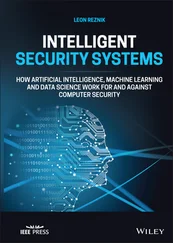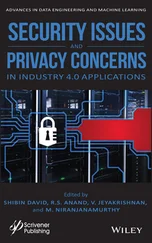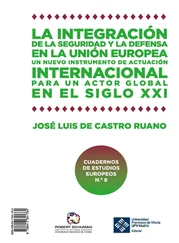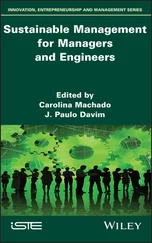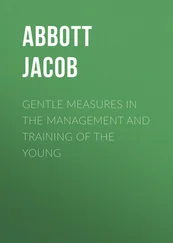113 113
114 114
115 115
116 116
117 117
118 118
119 119
120 120
121 121
122 122
123 123
124 124
125 125
126 126
127 127
128 128
129 129
130 130
131 131
132 133
133 134
134 135
135 136
136 137
137 138
138 139
139 140
140 141
141 142
142 143
143 144
144 145
145 146
146 147
147 148
148 149
149 150
150 151
151 152
152 153
153 154
154 155
155 156
156 157
157 158
158 159
159 160
160 161
161 162
162 163
163 164
164 165
165 166
166 167
167 168
168 169
169 170
170 171
171 172
172 173
173 174
174 175
175 176
176 177
177 178
178 179
179 180
180 181
181 182
182 183
183 184
184 185
185 186
186 187
187 188
188 189
189 190
190 191
191 192
192 193
193 194
194 195
195 196
196 197
197 198
198 199
199 200
200 201
201 202
202 203
203 204
204 205
205 206
206 207
207 208
208 209
209 210
210 211
211 212
212 213
213 214
214 215
215 216
216 217
217 218
218 219
219 220
220 221
221 223
222 224
223 225
224 226
225 227
226 228
227 229
228 230
229 231
230 232
231 233
232 234
233 235
234 236
235 237
236 238
237 239
238 240
239 241
240 243
241 244
242 245
243 246
244 247
245 248
246 249
247 250
248 251
249 252
250 253
251 254
252 255
253 256
254 257
255 258
256 259
257 260
258 261
259 262
260 263
261 264
262 265
263 267
264 268
265 269
266 270
267 271
268 272
269 273
270 274
271 275
272 276
273 277
274 278
275 279
276 280
277 281
278 282
279 283
280 284
281 285
282 286
283 287
284 288
285 289
286 290
287 291
288 292
289 293
290 294
291 295
292 296
293 297
294 298
SCIENCES
Networks and Communications , Field Director – Guy Pujolle
Network Management and Control , Subject Head – Francine Krief
Intelligent Security Management and Control in the IoT
Coordinated by
Mohamed-Aymen Chalouf

First published 2022 in Great Britain and the United States by ISTE Ltd and John Wiley & Sons, Inc.
Apart from any fair dealing for the purposes of research or private study, or criticism or review, as permitted under the Copyright, Designs and Patents Act 1988, this publication may only be reproduced, stored or transmitted, in any form or by any means, with the prior permission in writing of the publishers, or in the case of reprographic reproduction in accordance with the terms and licenses issued by the CLA. Enquiries concerning reproduction outside these terms should be sent to the publishers at the undermentioned address:
ISTE Ltd
27-37 St George’s Road
London SW19 4EU
UK
www.iste.co.uk
John Wiley & Sons, Inc.
111 River Street
Hoboken, NJ 07030
USA
www.wiley.com
© ISTE Ltd 2022
The rights of Mohamed-Aymen Chalouf to be identified as the author of this work have been asserted by him in accordance with the Copyright, Designs and Patents Act 1988.
Any opinions, findings, and conclusions or recommendations expressed in this material are those of the author(s), contributor(s) or editor(s) and do not necessarily reflect the views of ISTE Group.
Library of Congress Control Number: 2022931274
British Library Cataloguing-in-Publication Data
A CIP record for this book is available from the British Library
ISBN 978-1-78945-053-8
ERC code:
PE7 Systems and Communication Engineering
PE7_1 Control engineering
PE7_8 Networks (communication networks, sensor networks, networks of robots, etc.)
1
Multicriteria Selection of Transmission Parameters in the IoT
Sinda BOUSSEN1, Mohamed-Aymen CHALOUF2 and Francine KRIEF3
1 Mediatron, University of Carthage, Tunis, Tunisia
2 IRISA, University of Rennes 1, Lannion, France
3 LaBRI, Bordeaux INP, Talence, France
Cognitive radio networks (CRN) and the Internet of Things (IoT) are concepts that are taking on more and more importance in modern communication systems. The IoT extends connectivity to the real world (Atzori et al. 2010; Perera et al . 2014, 2015; Xu e t al . 2014; Al-Fuqaha et al . 2015), by allowing an object (a sensor, smartphone, car, etc.) to interact with the existing internet infrastructure, to communicate with other objects and to collect and exchange data. An object can have several interfaces and so detect different access networks. When several access networks are available, it will be necessary to make a decision about selecting the access network best adapted to the current situation. However, with the increase in the number of connected objects, the spectrum is becoming a precious resource, one threatened with scarcity. Faced with this problem, we can imagine objects with cognitive capacities (Vlacheas et al . 2013). This will make it possible to optimize use of unoccupied radio frequencies while still minimizing interferences with priority users. In an intelligent radio environment (Haykin 2005; Akyildiz et al . 2006), we distinguish two types of users: priority users, called primary users, who have an exclusive right over some of the spectrum, and secondary users, also called cognitive users, who have “opportunistic” access to the spectrum. The main functions of intelligent radio are spectrum detection, decision-making, spectrum sharing and spectrum mobility. There is a great deal of research focusing on IoT architectures based on intelligent radio (Shah et al. 2013; Vlacheas et al . 2013; Aijaz and Aghvami 2015; Khan et al. 2016), which has demonstrated the need to integrate intelligent radio into the IoT (Wu et al. 2014a).
In this chapter, we tackle the question of making a decision for effective access to an access network or radio channel in the IoT. To communicate, an object that has several interfaces and/or cognitive capacities can detect numerous access networks or radio channels. In this case, it is necessary to choose the access network or radio channel best adapted to the communication in question. Among those aspects that might be considered in this decision, we might find Quality of Service (QoS) constraints on the IoT application and the object’s own energy constraints (Zhu et al. 2015; Shaikh et al. 2017). Thus, the decision-making module should be multicriteria and consider the dynamic context of the radio environment, the needs of the application in terms of QoS and the object’s own energy constraints.
The remainder of the chapter is organized as follows. Sections 1.2and 1.3give an overview of recent work on managing vertical handover and spectrum handoff, respectively, in an IoT context. In section 1.4, we suggest a multicriteria decision-making module that makes it possible to select and adapt radio transmission perimeters in order to satisfy the QoS requirements of the transported data equally as well as the energy constraints of the communicating objects. The suggested module will be used equally as much where heterogenous networks co-exist as in the context of intelligent radio. The choice of access network (presence of several heterogenous networks) or radio channels (use of intelligent radio) depends on the number of types of contextual information such as the networks state, user preferences, the application constraints and the characteristics of the object. To evaluate the suggested decision-making module, we consider the domain of Vehicular Ad-hoc NETworks (VANETs) and examine two possible situations: with and without intelligent radio.
Читать дальше





